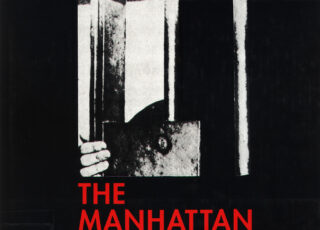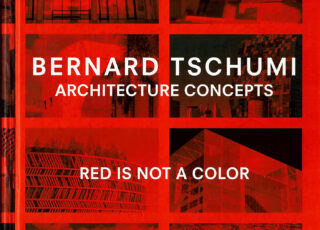Marinčić, Computational Models in Architecture
This scientific work focuses on computer-aided computational models in architecture. The author initially investigates established computational models and then expands these with newer ...
Continue Reading →Jacquette, Schopenhauer and the Aesthetics of Creativity
Schopenhauer’s account of the artistic process is an early contribution to the study of creativity. This account extends his analysis of art beyond ...
Continue Reading →Hvattum, Gottfried Semper and the Problem of Historicism
Using key texts by the German architect and theorist Gottfried Semper, Mari Hvattum offers a reinterpretation of historicism, viewed as a philosophical outlook ...
Continue Reading →Kerr, The Gentlemans House
After Scottish architect Robert Kerr (1823-1904) published this book in 1864, he was given a commission to build what would become his best-known ...
Continue Reading →Jacobi, The Architecture of Banking in Renaissance Italy
Over the course of the twelfth and thirteenth centuries, European society confronted rapid monetization, a process that has been examined in depth by ...
Continue Reading →Gothein, A History of Garden Art
Marie Luise Gothein (1863-1931) published this scholarly two-volume history of garden design in German in 1913. Its second edition of 1925 was translated ...
Continue Reading →Hillier, Hanson, The Social Logic of Space
The book presents a new theory of space: how and why it is a vital component of how societies work. The theory is ...
Continue Reading →Hartnett, The Roman Street
Every day Roman urbanites took to the street for myriad tasks, from hawking vegetables and worshipping local deities to simply loitering and socializing. ...
Continue Reading →Jones, The Sociology of Architecture
States have long been active in commissioning architecture, which affords one way to embed political projects within socially meaningful cultural forms. Such state-led ...
Continue Reading →Ungers, Morphologie City Metaphors
First published in 1982, German architect Oswald Mathias Ungers’ City Metaphors juxtaposes more than 100 various city maps throughout history with images of ...
Continue Reading →Most liked books

Tschumi, The Manhattan Transcripts
May 23, 2025
Tschumi, Red is not a Color
May 23, 2025Recent Comments
Categories
- _English Language 1454
- _French Language 55
- _German Language 69
- _Italian Language 54
- _Latin Language 45
- 1750-1850 64
- 17th Century 77
- 17th culture and other cities in Italy 5
- 19th century 45
- 20th Century 151
- 21th Century 75
- Aesthetics 5
- Afrofuturism 3
- Ancient Literature 37
- Anthropocene 1
- Anthropology 3
- Architectural Theory 228
- Architecture + Philosophy 37
- Architecture and Literature, Symbolism 36
- Art 13
- Art Theory 110
- Artificial Intelligence 11
- Artists in Rome 20
- Astronomy 2
- Autobiography 1
- Bernini 19
- Biology 5
- Catalogue 2
- Christian Iconography 18
- Christianity 13
- Cinema 2
- City 45
- Classical 1
- Construction 1
- Contemporary 2
- Design 29
- Digital Architectonics 26
- Drawings 41
- Economy 31
- Empire, Architecture + Catholicism 14
- England & British Isles 26
- Enlightenment Library 127
- Evolution 6
- Fashion 6
- Feminism 20
- Film Festival 1
- France 47
- Gender and Sexuality Studies 5
- Gothic 13
- Greek, Roman Library 99
- Historiography 43
- Humanism 12
- India 5
- Islam 5
- Italy 80
- Landscape Architecture 8
- LGBT 1
- Libraries 0
- Linguistics 6
- Literary Criticism 11
- Literary Theory 82
- Literature 95
- Low Countries (Benelux) 14
- Mathematics 61
- Medicine 4
- medieval library 38
- medieval literature 12
- Modern 51
- Monuments + Conservation 27
- Music Theory 1
- Mysticism 4
- Mythology 19
- Nature, Ecology, Animals 4
- Neurobiology 1
- Opera 5
- Philosophy 346
- Physics 16
- Poetry 6
- Politics 76
- Popes, Vatican, Rome 27
- Portrait, Sculpture, Materiality 56
- Post-Modern 22
- Programming 2
- Psychology 22
- Religion 23
- Renaissance 86
- Renaissance Library 80
- Rhetorics 1
- Roman Architecture 21
- Rome 122
- Schinkel 8
- Science 57
- Sociology 21
- Sound 7
- Sources 56
- Spain 10
- Switzerland 48
- Uncategorized 73
- Urbanism 53
